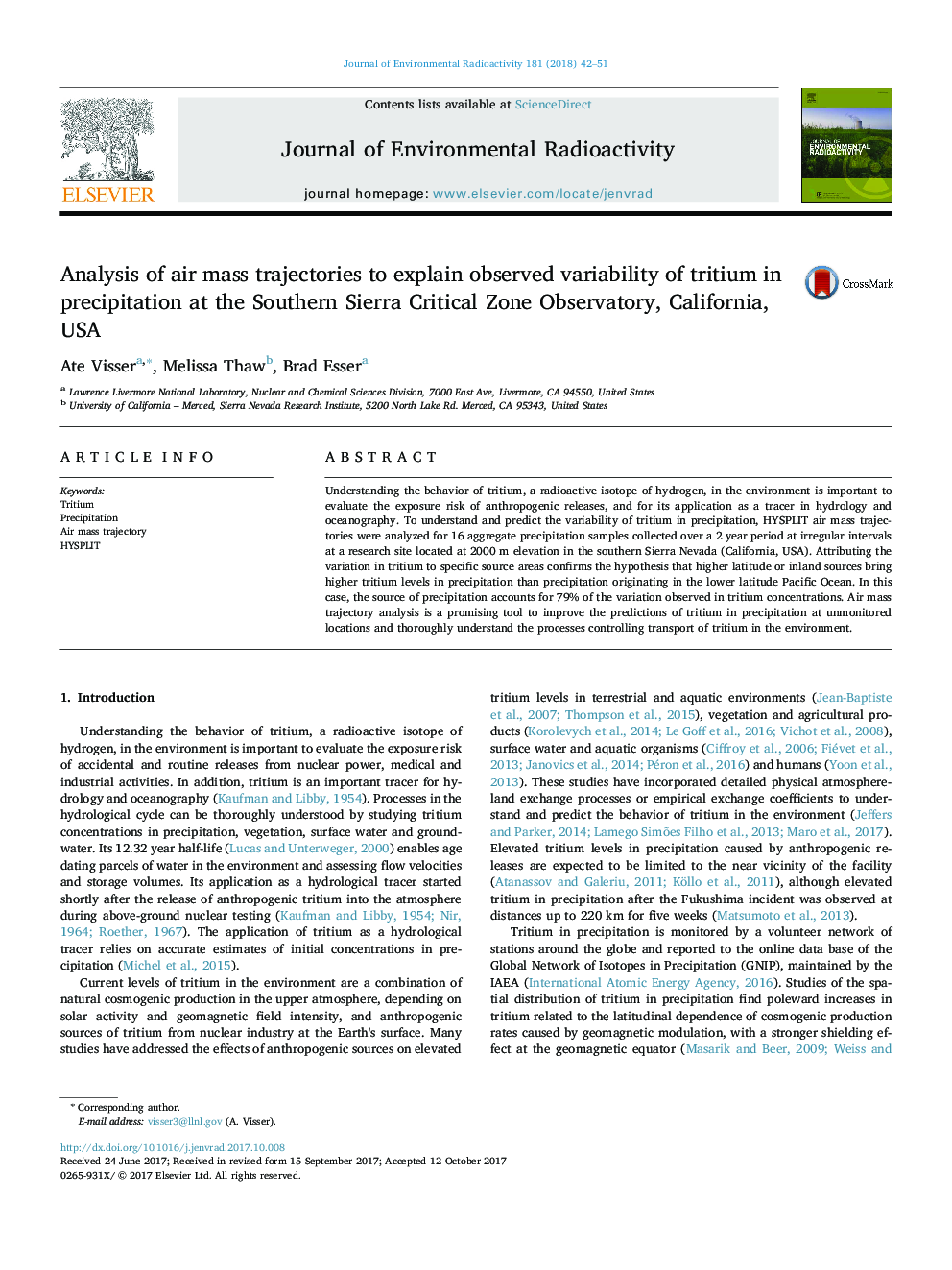| Article ID | Journal | Published Year | Pages | File Type |
|---|---|---|---|---|
| 8080940 | Journal of Environmental Radioactivity | 2018 | 10 Pages |
Abstract
Understanding the behavior of tritium, a radioactive isotope of hydrogen, in the environment is important to evaluate the exposure risk of anthropogenic releases, and for its application as a tracer in hydrology and oceanography. To understand and predict the variability of tritium in precipitation, HYSPLIT air mass trajectories were analyzed for 16 aggregate precipitation samples collected over a 2 year period at irregular intervals at a research site located at 2000 m elevation in the southern Sierra Nevada (California, USA). Attributing the variation in tritium to specific source areas confirms the hypothesis that higher latitude or inland sources bring higher tritium levels in precipitation than precipitation originating in the lower latitude Pacific Ocean. In this case, the source of precipitation accounts for 79% of the variation observed in tritium concentrations. Air mass trajectory analysis is a promising tool to improve the predictions of tritium in precipitation at unmonitored locations and thoroughly understand the processes controlling transport of tritium in the environment.
Related Topics
Physical Sciences and Engineering
Energy
Nuclear Energy and Engineering
Authors
Ate Visser, Melissa Thaw, Brad Esser,
